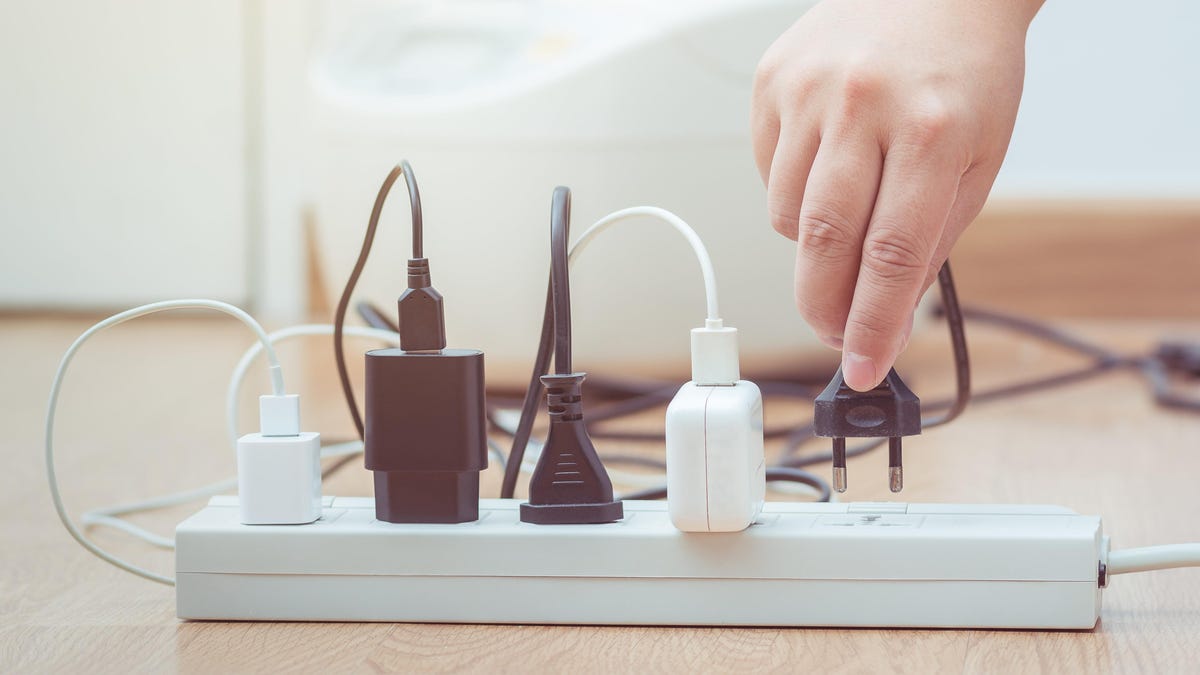How Do Astronauts Poop in Space?
There’s a ton of space-related news dominating the headlines right now. Billionaires are engaged in a space race, celebrities are riding along in rockets, and 1,500 pages of UFO-related reports were just declassified by the government. The age of...


Photo: Nuttawut Rungmanaset (Shutterstock)
There’s a ton of space-related news dominating the headlines right now. Billionaires are engaged in a space race, celebrities are riding along in rockets, and 1,500 pages of UFO-related reports were just declassified by the government. The age of space tourism may soon be upon us, but the age of space curiosity is already quite firmly here. Whether you end up on a tourism rocket, living in a space station a la Zenon: Girl of the 21st Century, or just reading about the cosmic goings-on from the relative comfort of Earth, you’ve probably already got a lot of questions. One might start with: How, exactly, do they go to the bathroom up there?
It could seem low-brow or immature to ponder this when the idea of space exploration is so complex and—with the climate catastrophe going the way it’s going—even vital, but we think it’s quite reasonable to wonder. Here’s your answer.
What is the primary barrier to traditional bathroom use in space?
At the heart of this issue is gravity, or rather, the lack of it out there in space. The concept of gravity is a simple one we all know and understand: There is a force that pulls things down to Earth. That’s physics. We all get it.
In space, where there is less gravity, you float. Everything floats. Whatever isn’t secured to a surface will be suspended, which is why we see videos of astronauts zipping themselves into little sleeping bag contraptions when it’s time to doze. Dr. Tanya Harrison, a planetary scientist, told Lifehacker that on the Space Station, astronauts exist in “microgravity.” They are still close enough to Earth to have a little gravity, but they’re essentially always in a state of “falling.” (Interestingly, she said, though their urine is basically “floating” inside their bladders, astronauts have reported that the sensation of needing to use the bathroom remains the same in these conditions.)
It follows, then, that excrement floats, too, which sounds terrible. For now, most of the people who head out to space are some of Earth’s smartest and brightest individuals who’ve trained and studied for years so they can go make big discoveries. It would be undignified—not to mention distracting—for them to be carrying out their brilliant work while a bit of waste floats by, no? Harrison pointed out that this very thing happened during the Apollo 10 mission in 1969. Per official transcripts from the mission, Commander Tom Stafford said, “There’s a turd floating through the air.” As they moved to clean it up, the astronauts on board quibbled over to whom said turd belonged. To this day, the mystery is unsolved.
G/O Media may get a commission

Save $10
Fire TV Stick 4K Max
Stream your favs easier
The Fire TV Stick 4K Max can be used to access all of your favorite streaming services with crystal clear 4K visuals, can be used along with Wi-Fi 6 devices, and even grants access to some live TV services too.
Astronauts’ research in the field is also paving the way for space tourism and, maybe one day, space living. It would certainly be hard to convince people to buy a ticket to space if they thought poop would be flying around inside the vehicle, but rest assured the system has improved since 1969.
So, how do astronauts pee up there?
Look, you’re not the first person to question this. In fact, it’s been on the minds of some of our greatest thinkers since long before we first sent a man to the moon. Harrison said she gets asked about how astronauts use the bathroom all the time and “it ranges all ages. Everybody wants to know how this works because it’s something that we can all relate to.” That’s fair: Not everyone knows what it’s like to be an astrophysicist, but everyone knows what it feels like to have to go to the bathroom. This is one of life’s great equalizers.
Tracy Gregg, a faculty expert on planetary volcanology at the University of Buffalo, published a little explainer last year. She noted that in 1961, when Alan Shepard became the first American in space, he did so with “damp underwear” because mission control advised him to just pee in his spacesuit. Too bad for Shepard, but at least he got a super-cool claim to fame out of the mission. These days, plenty of people go into space, so provisions are necessary on longer trips.
The International Space Station has a toilet now, according to Gregg, but it’s been redesigned in recent years. The first toilet, from 2000, was designed for individuals who can stand to urinate, so anyone without the necessary bodily equipment struggled to use it. We won’t get into the sexism here, but there is time for us all to give it a brief eye-roll.
In 2018, NASA spent $23 million improving the bathroom situation, creating a special vacuum system. This involves a hose with a funnel at the end. Is that as convenient as just sitting down on or standing over a toilet Earthside? It depends how you view convenience, we suppose, but it’s certainly novel.
And as for pooping in space?
Pooping is a little different. That $23 million vacuum toilet has a special function for solid waste. It looks a lot like a regular toilet, in fact, and features a raised seat. Throughout the bathroom, there are handholds and footholds so any space-bound bathroom-user can hold on and not float away mid-expulsion. (Can you imagine?) As soon as an astronaut opens the lid to do their business, the toilet starts suctioning so nothing can drift back out of the bowl or stink up the place.
“It’s not a glamorous process,” Harrison said. “It’s kind of akin to camping, almost, if you’ve ever been in a campground where you have a pit toilet or something like that. For being what we think of as being super futuristic in space, the setup is not anything all that futuristic.”
Harrison said the toilet is much smaller than the ones we’re used to here on Earth, and in addition to the suction, there’s a little bag in it. After an astronaut finishes doing their business, they can close the bag and then they use, for lack of a better word, a sort of stick to shove it “down into this thing that kind of looks like a beer keg,” where it waits to be disposed of.
Back in the day, before that big investment, astronauts relied on thigh straps to sit on the sex-biased toilet. As Gregg notes, “It didn’t work very well and was hard to keep clean.”
Keep in mind this issue doesn’t impact people on quick trips as much as it does those on the Space Station, which Harrison noted is the only place people are living in space for extended periods of time right now. When, say, Jeff Bezos or Sir Richard Branson go up in their rockets briefly, this isn’t a top-of-mind concern.
Where does bodily waste go in space?
If you’ve ever gone camping in an RV or used a Porta Potty at a music festival, you’ve probably wondered where the waste goes once it gets collected. One of the most beautiful things about modern plumbing is unless you work in the industry or something goes wrong in your home, you really never have to think about where the stuff goes once it’s out of your body and you flush it away. Ignorance can be bliss.
But, of course, waste has to go somewhere. Rock fans may be aware of something called the “Dave Matthews Band Chicago River Incident,” which took place in 2004 when the DMB tour bus dumped about 800 pounds of waste from its septic tank off the Kinzie Street Bridge onto a sightseeing boat in the Chicago River below. To be super clear, there were people on that boat and those people experienced a shit shower. There are all kinds of legalities around where waste has to be disposed of here on Earth because it’s dangerous to just empty tanks into drains or rivers. RV users, for instance, know to head to designated dump stations when it’s time to clear their septic tanks out.
All of that said, what’s the deal in space? There are no rivers to pollute, right? Does the vacuum-toilet just toss the waste out into the great unknown to float around forever, appalling aliens? The answer is kind of worse than that: Astronaut pee is collected and turned back into clean, drinkable water. Per Gregg, astronauts even have a little saying about this: “Today’s coffee is tomorrow’s coffee.” All in the name of science, baby!
“That’s really something important for us if we start having humans living on the moon or Mars or going on these deep space missions, because you can’t bring all that water with you so you want to recycle as much as possible,” said Harrison. Still, she admitted, “Even as a scientist, it kind of grosses me out a little bit. I would definitely have to get over that mental hurdle, like, it’s just water at this point; but you know where it came from.”
As for poop, while it can be brought back to Earth to be studied, it’s typically burned. It’s vacuumed into those bags we mentioned, put in airtight containers along with wipes and gloves, and eventually placed into cargo ships. This happens about once every 10 days and the duty falls to “the unlucky astronaut that week” charged with changing out the drum and putting in a new one. The waste is then launched at Earth and burns up in the upper atmosphere, which is decidedly cooler than what the Dave Matthews Band bus did with theirs.

 KickT
KickT 






























